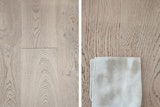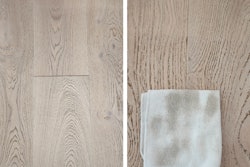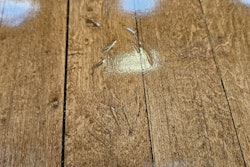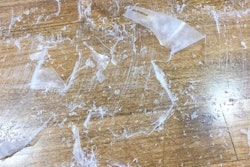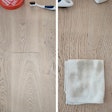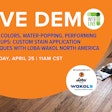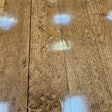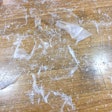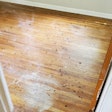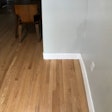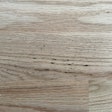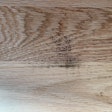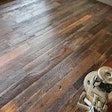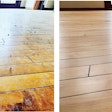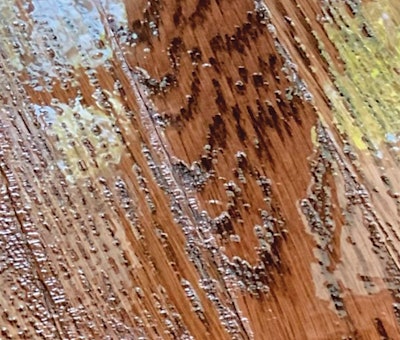
 Bubbles were appearing only in the springwood and only in certain areas of the floor.
Bubbles were appearing only in the springwood and only in certain areas of the floor.
The Problem
I received a call about bubbles randomly appearing on a stained red oak floor during the first coat of oil-modified polyurethane.
What Happened
This was an existing floor in an older home and an otherwise normal sand and refinish. The floor was screened and cleaned up, then water-popped. It was allowed to dry, then stained with a medium-toned color. The stain was allowed to dry overnight, and then the following day the first coat of oil-based polyurethane was being applied when bubbles started surfacing over the spring grain. The contractor snapped some photos and kept going, as the problem was not happening all over the entire floor, but instead was appearing seemingly at random.
The Inspection
As we talked through his process, the temperature, relative humidity, and job sequence all seemed pretty normal and within recommendations, with one exception: The contractor did not take moisture readings on the wood at any point during the process, so there was no way to verify if the wood had completely dried back out prior to applying the stain. I had him describe his process for the water popping. He used the "old school" method of wiping the floor down with wet rags. We reviewed further, and the contractor realized there was a pattern to the bubbling problem: It was repeating where he had rewet his rags. When the oil-based poly was applied, it caused the excess water and pigments to push up from the spring grain. This resulted in the unwanted bubbling.
How to Fix the Floor
The floor fix was not difficult. The contractor stayed off the job for a couple days while maximizing airflow and just letting the floor and finish dry out. After a couple days the floor was simply screened and recoated.
In the Future
This contractor learned the simple lesson that moisture meters are meant for more than just installation. When water-popping, the best practice is to take moisture readings of the floor before water-popping, then wait to stain the floor until the MC of the wood is the same as it was before the water was applied.
In this case, it probably also would have helped if the contractor had used a more modern method of water-popping, such as using a garden-type sprayer or even a sponge, which will distribute the water more evenly onto the floor. Some people even will water-pop the floor and then go over it with a T-bar to help distribute any excess water over the wood floor.
RELATED: Bubbles in a Strand Bamboo Floor Create a Sticky Mess











